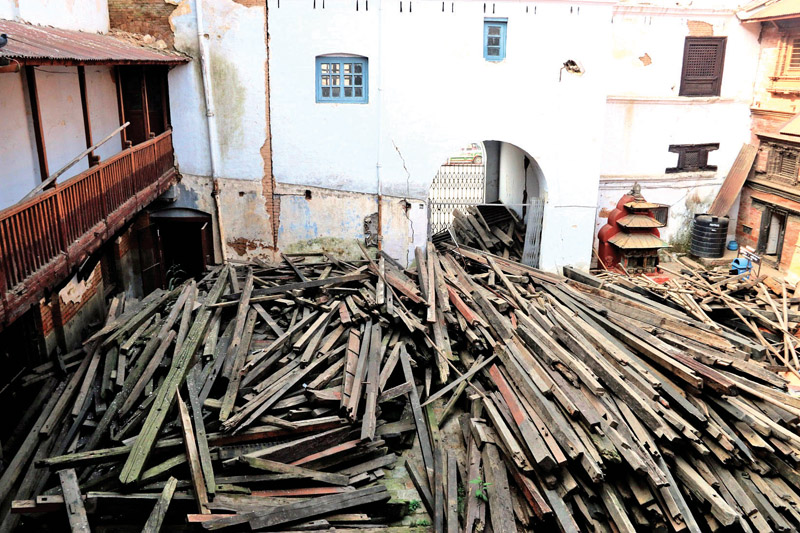Justifying slow reconstruction
Learn from the past, accept past mistakes and make sure we do not repeat them
Driving from Gland into the nearby Jura hills in Switzerland last week, I was confronted by a fellow passenger on the state of rehabilitation in Nepal. The prevalent understanding is that all the millions of francs sent to Nepal have vanished without any work being carried out. For example the fund that was collected for Nepal through a renowned television programme has not been sent to Nepal in fear of the funds not getting to the people in need. The basic impression in Switzerland of the situation in Nepal seems to be that corruption is rampant. The government and implementing bodies don’t have the capacity or system in place to deal with the huge task of post-disaster reconstruction.
Having spent the last 10 months desperately working on establishing the rehabilitation system, in my case particularly for cultural heritage, I could not accept such accusations. I retorted that such opinions are based on the mindset that rehabilitation can be measured in purely monetary figures. This surely is incorrect. Furthermore, I was told that most
of the funds that have been provided to Nepal are loans that are directly bound to specific programmes, activities or expenses.
Nepal is dependent on international support, but what has been the overall impact of international involvement on Nepal over the decades? We hear that international agencies are geared towards emergency relief but are lacking in sustainable long-term reconstruction. Importance must be given to ensuring that governance functions and communities become self-sufficient. Nepal is attempting to adopt the approach of promoting the ‘Nepali Way’ with the government supporting communities to rebuild their own houses. Will this be effective?
Possibly both donors and recipient government would need to be blamed for equating reconstruction with the phase-wise reduction of the calculated total post-disaster monetary need. The Post Disaster Needs Assessment (PDNA) seems to have unleashed a rather insane trend of tendering projects to be able to tick off these amounts from the list of ‘needs’. The tendering also comes with ulterior motives of dumping one’s responsibilities on
contractors who also oil their palms. When solely focusing on the monetary equations, the actual intent of reconstruction is sidelined.
Most monuments that collapsed were either due to lack of maintenance or in many cases due to earlier inappropriate interventions. In many collapsed monuments, we find rotten wooden elements that should have functioned as ties. Further we find interventions carried out over the past half century without understanding the traditional system of construction and damaging critical connections. Often interventions introduced stronger and more rigid materials such as concrete, cement and steel that has damaged the traditional structural systems and materials that they were supposed to protect.
This means that in the past either we did not do what was necessary or when we did do something, it ended up becoming the cause of the destruction. This seems to be a vicious circle that we must extract ourselves from. The only way to do so is to learn from the past, accept past mistakes and make sure we do not repeat them. This requires time and resources to be put into assessments and research. Will we take time to understand and thereby
justify our actions to the best of our knowledge?
The reconstruction of Kasthamandap will become the project that will set the standard. We must complete archaeological sub-surface investigations of the base and foundations. The sorting of salvaged elements must
be completed and original materials examined for possible reuse. Traditional craftsmen would then need to be consulted to figure out how best the reassembly of the monument can be implemented. This will take time and must be carried out step by step since we only have one chance to get it right.
(The author is an architect and can be contacted through paharnepal@hotmail.com)






